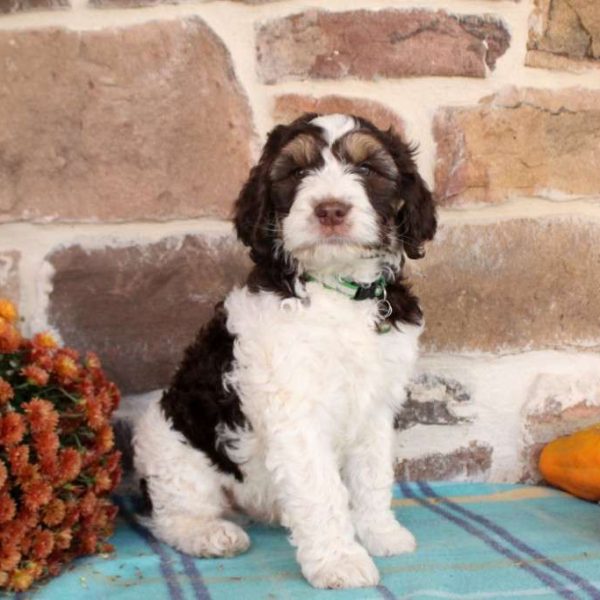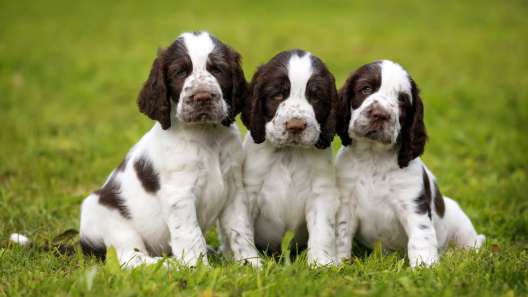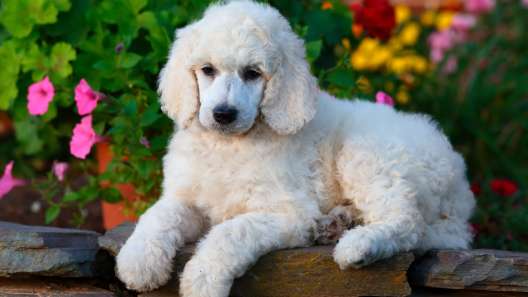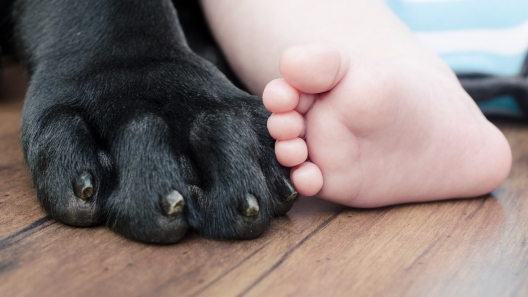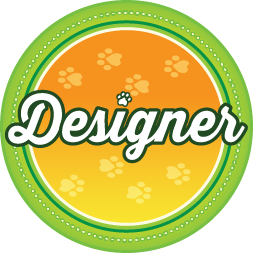
-
Activity Level:
high
-
Shedding Level:
low
-
Grooming Level:
moderate
-
Trainability:
high
-
Good for Novice Owners:
high
-
Adaptability:
moderate
-
Kid/Pet Friendly:
often
-
Prey Drive:
moderate
-
Watchdog:
chill
- Average Size: Medium
- Average Lifespan: 10-15 years
- Registered?: other
Springerdoodle Dog Breed Information
Overview
Temperament
Adaptability
Health
Owner Experience
Grooming
Activity Level
Size
Life Span
Did You Know?
The Springerdoodle is a designer dog breed that originated in the United States. They are a cross between an English Springer Spaniel and a Poodle. A hybrid dog may take on characteristics from either or both of their parents. When it comes to a Springerdoodle, they are generally intelligent dogs that love their families and are eager to please. They also tend to have a playful, energetic personality and a gentle disposition.
Although this designer dog breed is not currently recognized by the American Kennel Club, they are recognized by other notable dog organizations. The American Canine Hybrid Club, Designer Dogs Kennel Club, International Designer Canine Registry, Designer Breed Registry, and more all recognize the Springerdoodle.
The Springerdoodle is a fantastic addition to any family, whether they are single owners or families with children. Their friendly personality and gentle, patient nature mean they tend to get along well with children, other dogs, and other pets.
Springerdoodles are also devoted and loyal to their families. They tend to be playful and absolutely love being around people. These dogs don’t tend to bark a lot. Springerdoodles also tend to be open and friendly with strangers, so they don’t tend to be good watchdogs or guard dogs.
A Springerdoodle is a moderately adaptable dog breed. They love to run and are better suited to homes with some space, especially fenced yards. They don’t tend to adapt well to apartment living unless you can dedicate some serious time each day to making sure they get enough exercise.
They do well in just about any climate. But, as with any dog breed, they are sensitive to high heat and to extreme cold. Because Springerdoodles thrive on attention and love their families, they do not like to spend long periods of time alone.
As a mixed-breed, the Springerdoodle can inherit the potential health conditions common to one, both, or neither of their parent breeds. Potential health concerns to be aware of in this designer breed include hip dysplasia, hypothyroidism, eye conditions, ear infections, skin issues, patellar luxation, epilepsy, Von Willebrand’s disease, Addison’s disease, Cushing’s disease, Legg-Calve-Perthes disease, and PFK deficiency.
Reputable breeders will screen their stock to make sure they’re not passing issues on to puppies. So, don’t be afraid to ask them about the genetic history and health of the parents. There may also be health clearances, certifications, or test results that you can review. Springerdoodles are also at a higher risk of bloat. Bloat in dogs can become dangerous quickly, so it’s important to know the symptoms and tips for how to prevent it.
Springerdoodles are intelligent dogs that enjoy learning and are eager to please. This means that they pick up on things quickly. They are highly trainable and are a good fit for owners of any experience level. Puppy training classes may not be necessary, but they can be a good idea as they often provide opportunities to socialize a puppy.
The grooming requirements for your Springerdoodle will depend on the coat they inherit from their parents. Should they end up with a Poodle coat, they will be low-shedding. But, they will require daily brushing to remove tangles and prevent mats from forming. They will also need professional grooming every 4-6 weeks to keep their coat healthy and looking great.
Should a Springerdoodle end up with a Springer Spaniel coat, they will have a double-coat that sheds moderately year-round and more heavily as the seasons change. Brushing once or twice a week and an occasional bath is usually enough to keep their coat healthy. Professional grooming for a clip during the summer can be a good idea.
In addition to coat care, you will also need to take care of your Springerdoodle’s nails, ears, and teeth. Monthly nail trimming is usually sufficient to keep nails from growing too long. But, if your dog’s nails just grow quickly or aren’t wearing down as much naturally, you may need to cut your dog’s nails more often.
Checking ears weekly and carefully cleaning them as needed can help prevent ear infections. Since Springerdoodles can be more prone to ear infections, you’re checking to make sure ears are dry, clean, and free of debris. If not, you can carefully clean your dog’s ears to help keep them healthy. If excess wax or moisture continues or there is discharge or redness, then it’s time to visit the vet.
When it comes to dental care, many dogs are seriously lacking. This is one of the reasons gum disease is one of the most common health issues in dogs! By practicing good dental care for dogs, you can help prevent painful dental diseases like gum disease, tooth decay, and tooth loss later in life. Brushing teeth or using an enzyme toothpaste daily and visiting the vet for regular cleanings are ideal. You can also get recommendations from your vet for dental hygiene treats and chews and a “dental care diet” for your dog to help supplement your efforts.
The Springerdoodle is a high-energy dog breed. Daily walks plus time to run and some extra activity are usually enough to keep this dog happy and healthy. But, if you’re up for it, they’ll probably be up for more activity too.
Their friendly personality makes them a great fit for trips to the dog park. They may also enjoy going for a swim, going on hikes with you, running with you, playing frisbee, and more. Don’t be afraid to try out different activities with your Springerdoodle to find out the ones you both love!
A fully-grown Springerdoodle usually stands 16-24 inches tall and weighs 30-60 pounds.
A Springerdoodle generally lives 10-15 years.
Springerdoodle may be the most common name for this designer dog breed, but they are also sometimes called a Springerpoo or a Sproodle.

